Read our detailed guide on maximizing SEO strategies for limited budgets, featuring actionable steps, high-impact tactics, and tips for sustainable growth.
How To Maximize SEO Strategies For Limited Budgets Without Sacrificing Growth
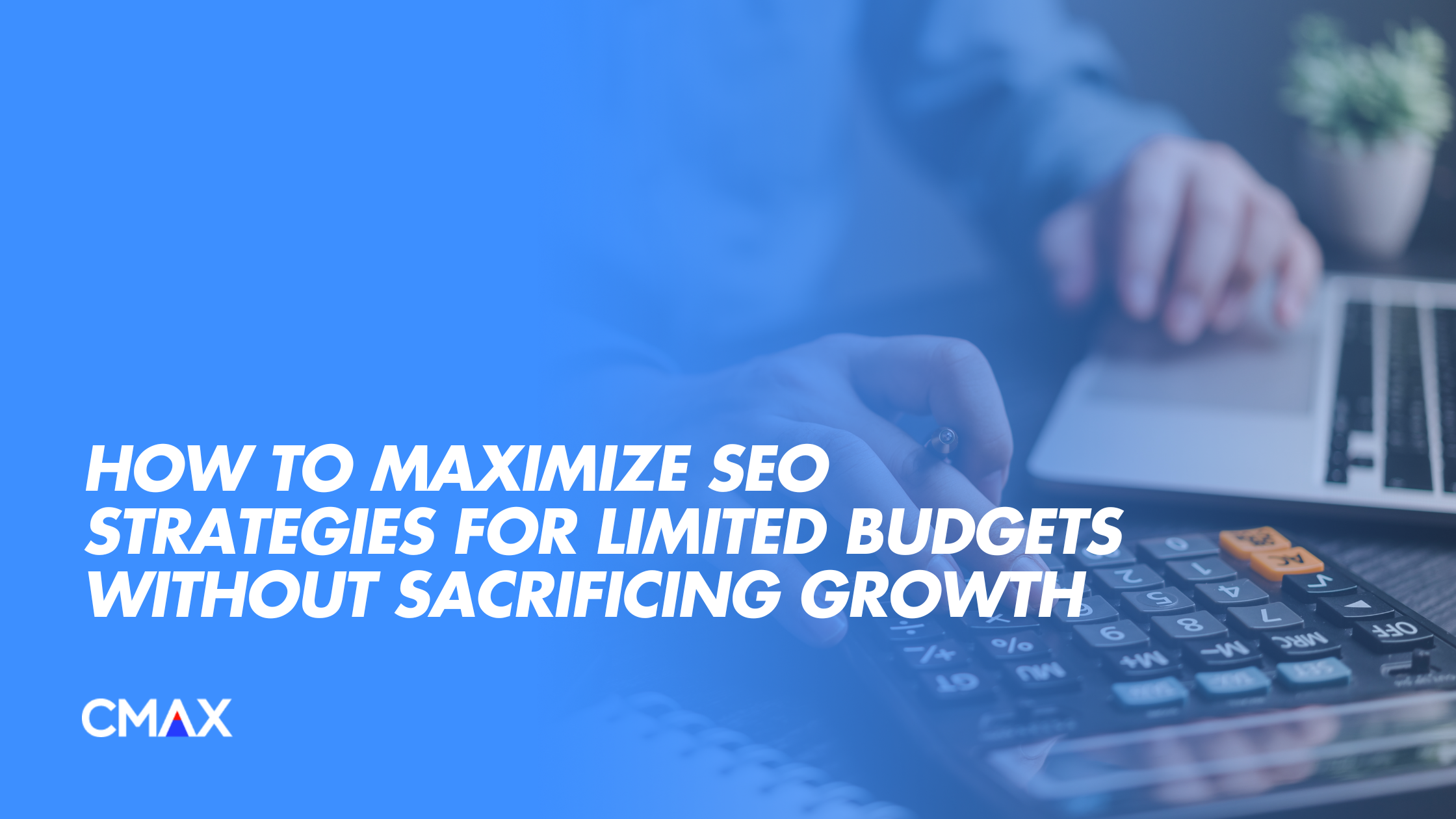

Read our detailed guide on maximizing SEO strategies for limited budgets, featuring actionable steps, high-impact tactics, and tips for sustainable growth.
You can still build a solid SEO strategy on a limited budge if you focus on high-impact, low-cost tactics. Regular audits, smart keyword targeting, and programmatic SEO can help improve performance and scale sustainably without overspending.
SEO strategies for limited budgets are often seen as elusive, but what if we told you cost-effective growth is well within your reach?
In this guide, we discuss some practical, cost-effective strategies you can implement right now to maximize your SEO efforts and see real growth.
Before you can improve your SEO strategy, you need to understand where you’re currently underperforming.
Wasting resources on tactics that don’t drive results will just drain your budget without contributing to your growth.
So, what’s the first step? A comprehensive SEO audit that shows you where things are clicking and, more importantly, where they’re not.
Apart from just fixing what’s broken, it’s also smart to try and understand what’s already working for your business. It’s all about paying attention to the right signals.
Start by checking out what’s performing well in your current strategy—whether it’s the pages bringing in the most traffic, the keywords with higher conversions, or campaigns with standout engagement. Tools like Google Analytics can be your best friend here, showing you which pages are really pulling their weight.
And, once you know what’s working, double down.
Take those strategies that are already bringing in results and pour more of your time, budget, and resources into them. Why? Because you’ve already proven they work.
When you’re working with a tight SEO budget, it’s all about making smart moves that get you big results without bogging down your finances.
The truth is, what counts as a “quick win” can vary depending on your business, but there are some solid strategies that pretty much anyone can benefit from.
The key is to step back and think: “What’s going to get me the most bang for my buck right now?” Focus on those first.
The idea is to get solid results with minimal investment, fast. Once you’ve got some momentum, you can reinvest those wins into bigger projects.
We know that SEO can feel overwhelming, especially when you’re trying to make your resources count.
So, to help you maximize your SEO efforts without breaking the bank, we’ve created the SEO Prioritization Matrix for Businesses with Limited Budgets.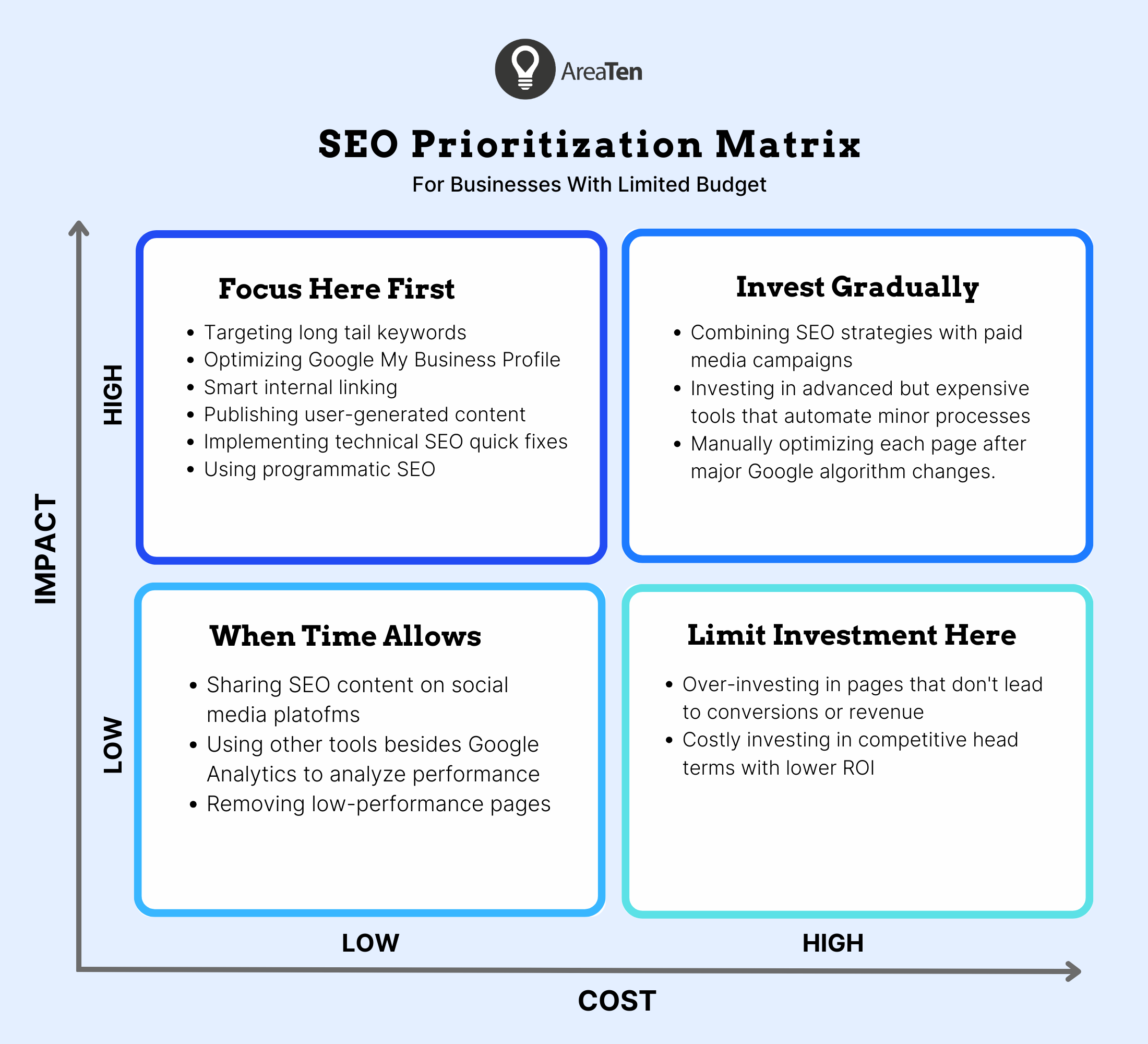
A matrix helps you sort through different SEO tactics based on their impact and cost, so you can easily spot which ones are worth your investment. Forget about wasting money on high-cost, low-impact
strategies—zero in on what will actually boost your online presence and deliver a solid return on investment (ROI).
Download our matrix here and start making more informed choices: SEO Prioritization Matrix for Businesses with Limited Budgets
Figuring out how long a strategy will take to implement is key to managing your resources efficiently. If something takes a lot of time, it might not be the best choice for a quick win, but it could still pay off in the long run. Knowing the difference helps you focus your energy where it counts, whether you’re looking for immediate results or planning for future gains.
Calculating the actual SEO cost for small business entities shows you whether or not a particular strategy fits within your budget constraints. But beyond monetary investments, it also pays to consider the tools and team resources required.
Understanding your competition is key when it comes to cost-effective SEO for small businesses. High-competition keywords can take more time and effort to crack, while less competitive niches could offer faster results. Sometimes, it’s all about chasing those quick wins while not getting too caught up in the big SEO battles.
Targeting high-intent traffic is something you should keep in mind when deciding which strategies to deploy. When you focus on keywords that align with what people are ready to buy, you’re bringing in visitors who are already primed to convert.
If your strategy can help you rank for these terms, it puts you in a great position to boost revenue organically without needing to rely too much on paid media management.
Remember, at the end of the day, it’s all about your bottom line. With that in mind, it’s best to prioritize strategies that have a high conversion potential. Focus on the ones that don’t just bring in traffic but actually drive real results—like more leads, sales, and customer engagement.
Scalability is a big deal. You want strategies that you can easily roll out across multiple pages or campaigns to really get the most value. If something works well in one place, it should be able to do the same elsewhere without costing you a fortune. This way, you can grow your SEO efforts without letting your costs skyrocket.
It’s important to know when you’ll start seeing results so you can plan your strategy right. Quick wins are necessary if you want to keep things moving, especially if you’re working with a tight budget. It’s all about balancing fast, easy wins while keeping an eye on the long game.
Figuring out how important a tactic is for your site’s overall health helps you set the right priorities. When resources are tight, start with the foundational stuff first—these are the building blocks of your overall SEO foundation. Getting these in place makes sure your site stays strong and ready to handle growth down the line.
Think carefully about how sustainable a particular strategy is for the long term. Some strategies might need regular updates and a steady flow of resources, which can really stretch your budget. It’s smarter to go for options that give you ongoing benefits without needing constant attention or investment.
Whether you’re aiming to drive more traffic, get people to engage more, or increase sales, your SEO efforts should support your overall business goals directly. Don’t lose sight of the big picture; keep your strategy focused on what really matters, and you’ll make good progress towards what you actually want to achieve with your business.
Long tail keywords are highly specific search phrases, usually made up of multiple words. And they’re some of the most powerful tools you have at your disposal in SEO.
Why are they becoming an integral part of evolving keyword strategies? Take, for example, the search term “cat food buy online,” which is a lot more specific than just “cat food.” When someone searches with such specific terms, that means they’re much closer to making a purchase, offering you a golden opportunity to tap into niche traffic.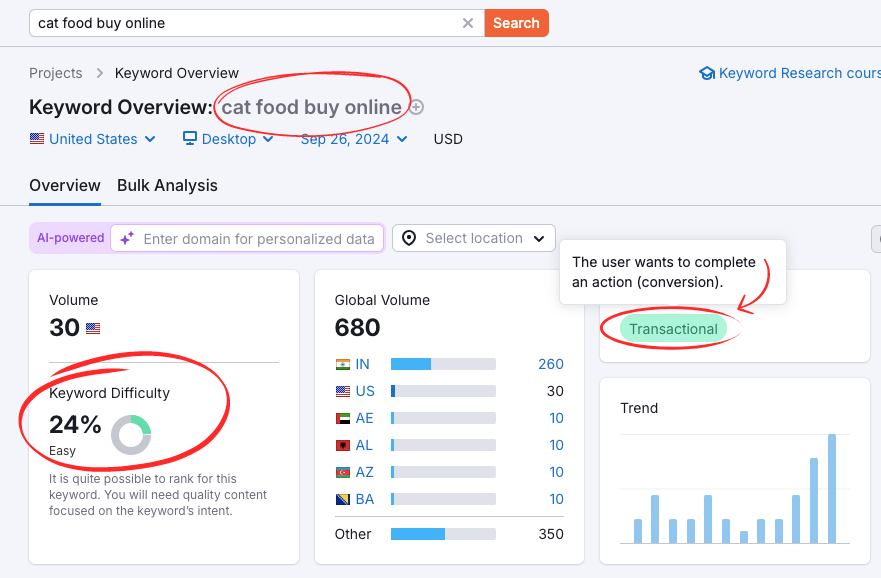
Because long tail keywords are more specific, you’re competing with fewer businesses, allowing you to rank faster on search engines. Plus, since users searching these focused terms typically have stronger purchase intent, this leads to higher conversion rates.
You get better rankings faster and have better chances of turning those clicks into sales.
Maximizing your Google My Business (GMB) profile for local SEO is a simple yet powerful move that can deliver fantastic results for your business. Imagine it as your online storefront, putting your brand right in front of people looking for what you offer in your area.
If you take the time to fill out your GMB profile with accurate, detailed information, you can significantly boost your visibility in local searches. Statistics back this up: businesses with optimized profiles are 70% more likely to attract visitors and 50% more likely to convert those visitors into customers (Source: Google). Best of all, setting up and optimizing your GMB profile is free of charge.
Claim your business on Google, make sure your details are accurate, and keep it fresh by updating photos, gathering reviews, and posting regularly.
When working with limited SEO budgets, most businesses prioritize content creation to drive organic traffic.
But the thing is, producing a large number of quality, relevant content pieces manually can really drain your resources. It’s even worse when you consider the fact that there are thousands upon thousands of long tail terms you want to target if you want to start scaling up your SEO.
That’s where automation comes in.
Instead of painstakingly crafting every piece of content one by one, automation lets you fire up a system that generates relevant content en masse. It’s like setting up a machine that pumps out targeted blog posts and landing pages at the push of a button, helping you cast a wider net over those long tail keywords.
Automation essentially gives you an efficient way to attract high-intent customers, all while avoiding the heavy competition and resource drain associated with broad, high-volume keywords.
Want to start automating content creation with programmatic SEO? Here’s how you can make it happen:
When you’re just starting to implement programmatic SEO, it’s easy to get caught up in the excitement of scaling content at lightning speed.
But slow down for a bit—just because you can produce tons of content doesn’t mean it’s always the right content. In fact, 65.14% of enterprise SEO experts cite content quality and authenticity issues as their biggest challenge when it comes to using AI.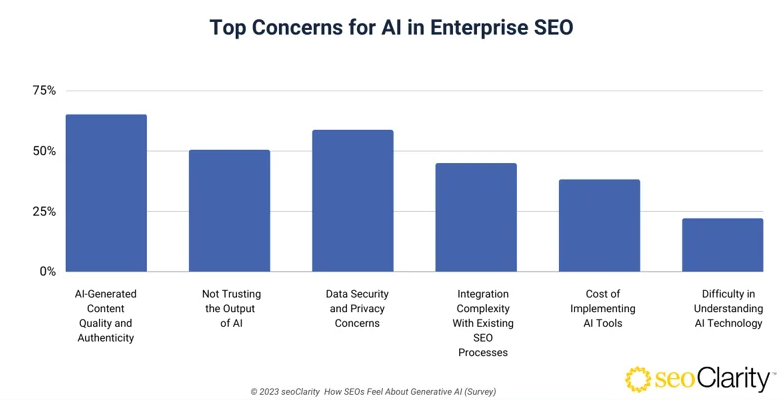
Source: seoClarity
You want to keep things personal with your content, ensuring your brand’s unique voice shines through every piece. But the problem is, a lot of people make the mistake of leaning too much on generic AI tools like ChatGPT for programmatic SEO.
These tools are handy, but they come with a downside: your content risks looking and sounding like everyone else’s. Even worse, if your industry falls under YMYL, regulations and legal requirements can add another layer of complexity.
When it comes to automating content creation, an advanced programmatic SEO tool needs to be a cut above the rest.
Good programmatic SEO content creation is all about scale, precision, and making sure every piece of content is spot on with your brand’s voice and SEO goals. Our proprietary technology is capable of ticking all the boxes, allowing you to generate thousands of unique, fully optimized pieces of content that align perfectly with what makes quality content.
And it does all of this while making sure your content remains search engine-friendly. That means more visibility, better compliance, and no sacrifice on quality. In fact, our finance clients cut their ad spend by half after we implemented these programmatic SEO techniques.
We start with human-centric content creation.
Our SEO copywriting experts work closely with you to nail down the initial content, making sure it fits your brand and stays compliant with all necessary standards. Once that’s set, we use it as training data for CMAX, which lets us recreate that same quality vibe across numerous pages.
Thanks to human insights combined with state-of-the-art technology, we can deliver a highly personalized and impactful SEO strategy that grows with your business.
Tracking things like organic traffic and keyword rankings is important, but they’re only part of the picture.
If you want to make the most of your SEO budget, you need to look at how each page is actually contributing to sales. For example, a product page that gets fewer visitors but converts like crazy is going to deliver a better return on investment (ROI) than a blog post that gets a ton of traffic but doesn’t lead to any sales.
If you zero in on the pages that actually drive conversions, you’ll see real revenue growth from your SEO efforts—not just higher traffic numbers.
Using tools like Google Analytics is a smart way to keep an eye on your SEO spend and performance, even with limited data.
They give you a good idea of how much each keyword or strategy is contributing to your revenue, making it easier to figure out where to focus your efforts. This means you can prioritize what really works without overspending.
Once you know which SEO strategies are actually working and delivering results, it’s time to reinvest to drive even more growth.
Instead of spreading your budget thin or chasing new tactics, focus on what works. For example, if optimizing long tail keywords is pulling in high-quality traffic, double down on that and keep building content around related terms to grow your momentum.
Stick with what works, and watch your growth take off without overspending.
Ever wish you could streamline the tedious parts of SEO, like crosslinking, without breaking a sweat?
Imagine not having to worry about setting up internal links page by page. Instead, our proprietary technology automates the whole process for you, ensuring that every new page you create is interlinked perfectly within your website.
This automated cross-linking process saves you time, enhances your site structure, boosts SEO performance, and helps visitors use your site more smoothly. Each page contributes to the bigger picture, strengthening your overall SEO strategy as part of a broader, interconnected web of content.
The best part? CMAX works smoothly with just about any CMS platform, so you can enjoy all these SEO benefits without having to overhaul your current setup.
Whether you’re running a small business or managing a large website, CMAX makes it easy to adopt advanced SEO tactics without getting bogged down in technical details.
The fact of the matter is, search engines are constantly changing the rules of the game.
Just when you think you’ve got it figured out, Google tweaks their algorithm, and suddenly, what worked yesterday doesn’t work today. How can you stay competitive when everything is in a state of flux? You do the only thing that you can: adapt.
Always stay proactive and keep tabs on the latest updates on Google Search Status Dashboard. Doing so allows you to adjust your strategy as changes happen, ensuring you don’t get left behind while your competitors zoom ahead.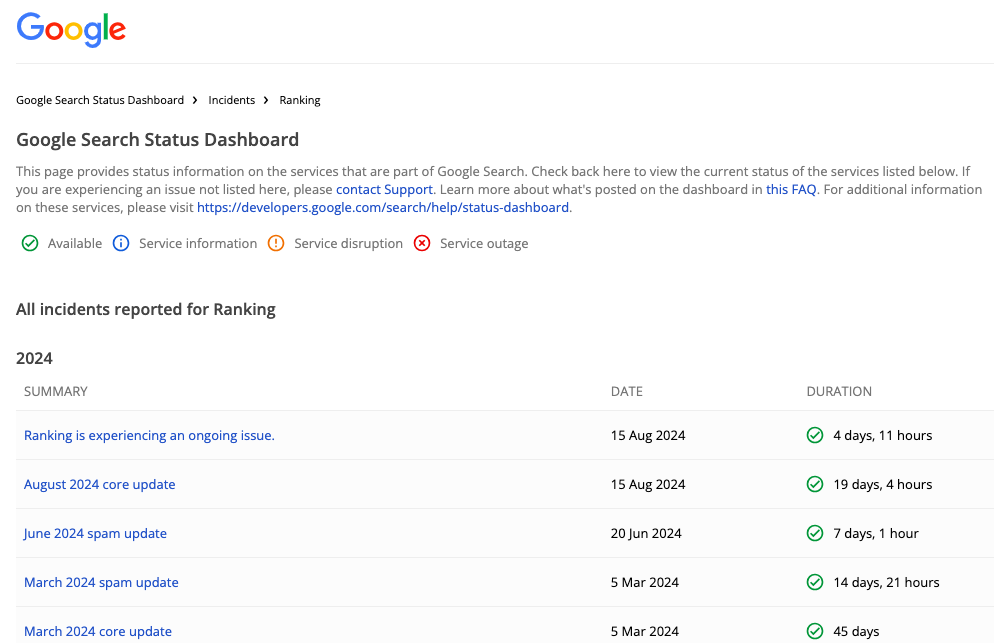
Source: Google
If you’re sticking rigidly to the same SEO strategy, you’re setting yourself up for stagnation.
The fix is simple: just allot some time to review your SEO efforts, perhaps on a quarterly basis. Every few months, take a step back, analyze your strategy, and adapt to new trends. Whether it’s changes in search behavior, seasonal fluctuations, or competitors shaking things up, you need to be ready to pivot.
If only there was a strategy that helps you drive SEO growth on the backend while you focus on what matters most to your business.
Good news: there is.
We know it’s not enough to deploy content and let it sit. As search engines increasingly reward websites that maintain fresh and dynamic content, CMAX automatically enhances large numbers of web pages. CMAX employs two smart strategies to keep its content up-to-date and visible for search engines.
Page-level optimization
A web page behaves as a mini-scientist, conducting experiments on itself. To determine what works best for search rankings, it tests different elements like headings, keywords, and layouts. The page learns and improves over time.
Team-based (portfolio) optimization
System pages work together as a smart team. If some pages don’t perform well, the high-performing pages adjust to help boost the others.
Self-optimizing programmatic SEO is how you future-proof your SEO.
And that’s just one of the many ways we drive limitless SEO growth for your business.
CMAX is all about making SEO for business needs easier, no matter how large or small your company may be.
This proprietary programmatic SEO technology is able to quickly produce thousands of pieces of content, allowing you to target all the long tail keywords your business needs to stay competitive online. This allows you to grow your online presence 4x faster and at 10x the scale of most other SEO services out there today.
Stop holding your success back with slow, outdated strategies. Inquire now about our FREE SEO Fast Track, and see the difference.